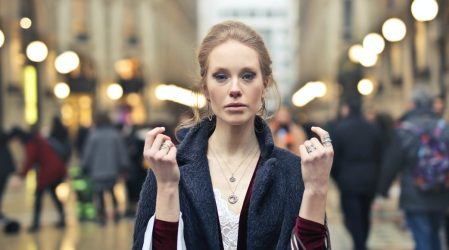Unlocking the Magic of Light with Lightboxes: A Comprehensive Guide

In the world of photography, videography, and design, the concept of light is nothing short of magical. It has the power to transform ordinary scenes into extraordinary ones, to evoke emotions, and to set the mood. Lightboxes, often referred to as lighting box, play a pivotal role in harnessing this magic, enhancing the way we perceive and manipulate light. This guide explores the mesmerizing realm of lightboxes, diving deep into their history, technology, applications, and more.
Chapter 1: The Birth of Lightboxes
Shedding Light on Lightboxes
The story of lightboxes begins with the humble candle. In the 17th century, as artists and scientists were beginning to understand the fascinating properties of light, they needed a controlled source of illumination. Thus, the earliest versions of lightboxes came into existence. These rudimentary lightboxes consisted of candles placed behind semi-transparent sheets to create a soft, even glow.
Fast forward to the 20th century, and the emergence of electricity revolutionized the world of lighting. Lightbox transformed, incorporating electric bulbs and fluorescent tubes. They became indispensable tools for various industries.
Chapter 2: Anatomy of a Lightbox
Let’s See What’s Inside
A lightbox is a simple yet versatile device. Its core components include a translucent surface, lighting elements, and a casing. The translucent surface can be made from materials like acrylic or plexiglass. When it’s lit from behind, it diffuses light evenly, making it ideal for various applications.
The lighting elements within a lightbox can be fluorescent tubes, LED panels, or incandescent bulbs. These elements illuminate the translucent surface, providing a consistent and even source of light.
Chapter 3: Types of Lightboxes
The Many Faces of Lightboxes
Lightboxes come in different shapes and sizes, each designed for specific applications. Here are some common types:
- Photography Lightboxes: Also known as photo light tents or studio lightboxes, these are used to create soft, shadow-free lighting for product photography. They are often collapsible for portability.
- Medical X-ray Lightboxes: These are used in the healthcare sector to view X-ray films. They provide a uniform backlight to enhance the clarity of the images.
- Advertising Lightboxes: Commonly found in malls and public spaces, advertising lightboxes use large backlit displays to showcase advertisements. They are an effective way to grab attention.
- Cinematic Lightboxes: In the film industry, lightboxes are employed for tracing and animation. They allow animators to see through layers of drawings and achieve smooth transitions.
- Art and Craft Lightboxes: Artists and crafters use these compact lightboxes for tracing, sketching, and other creative projects.
Chapter 4: The Art of Lighting Up Your Space
Illuminate Your Life with Lightboxes
Lightboxes are not limited to professional settings; they also play a crucial role in interior design. Whether you’re a homeowner, a decorator, or a business owner, incorporating lightboxes into your space can have a profound impact.
- Ambiance and Mood: Lightboxes can instantly set the mood of a room. They offer a soft and warm glow that creates a cozy and inviting atmosphere. In a bedroom, a lightbox can provide soothing illumination, while in a bar or restaurant, it can evoke a lively and vibrant vibe.
- Decorative Elements: Lightboxes come in various designs and styles, from vintage to modern. They can be customized with images, quotes, or artwork to match your decor theme. They serve as functional pieces of art.
- Night Lights: In children’s rooms, lightboxes can serve as night lights, offering a gentle, non-intrusive source of illumination that helps alleviate fear of the dark.
Chapter 5: Lightboxes in Photography
Mastering the Art of Illumination
Photographers understand the critical role of lighting in capturing stunning images. Lightboxes are indispensable tools in photography, particularly in product photography and macro photography.
- Product Photography: For e-commerce businesses, presenting products in the best possible light is crucial. Lightboxes provide an even, diffused light that eliminates harsh shadows and reflections, making products look more appealing.
- Macro Photography: When photographing small objects, achieving the right lighting can be challenging. A lightbox ensures that every tiny detail is well-illuminated, resulting in striking macro shots.
- Portrait Photography: While natural light is often preferred for portrait photography, lightboxes can be used as fill lights to soften shadows and create flattering, even illumination.
Chapter 6: Lightboxes in Graphic Design
Shaping Ideas with Light
Graphic designers frequently employ lightboxes in their creative processes. From sketching to typography, lightboxes enhance their capabilities.
- Sketching and Tracing: Designers can place their sketches or drawings on the lightbox’s surface and trace them with precision. This is a handy technique for creating vector illustrations or digitizing hand-drawn artwork.
- Typography and Lettering: When working on calligraphy or lettering projects, designers use lightboxes to ensure that their lines are perfectly straight and symmetrical.
- Storyboarding and Animation: In the realm of animation and filmmaking, lightboxes are used for traditional hand-drawn animation. They allow animators to see multiple frames simultaneously, ensuring smooth transitions and precise movement.
Chapter 7: The Technological Advancements
The Future of Illumination
Lightboxes have come a long way since their candle-lit origins. Technological advancements, especially in LED lighting, have revolutionized the industry. Here are some recent developments:
- LED Lightboxes: LED technology has significantly improved the efficiency, durability, and color accuracy of lightboxes. LED panels are energy-efficient and have a longer lifespan, making them the preferred choice for modern lightboxes.
- Customization: Lightboxes can now be customized in various ways. You can choose the color temperature, brightness, and even incorporate RGB LEDs for dynamic lighting effects.
- Wireless Control: Some lightboxes come with remote controls or smartphone apps, allowing you to adjust the lighting settings from a distance.
- Eco-Friendly Options: As sustainability becomes increasingly important, there’s a growing trend of eco-friendly lightboxes that are made with recyclable materials and consume less energy.
Chapter 8: DIY Lightbox Projects
Bringing Light into Your Own Hands
Creating your own lightbox can be a rewarding DIY project. Whether you’re a photographer looking for a budget-friendly solution or a hobbyist wanting to experiment, building a lightbox is a fun endeavor.
Materials Needed:
- A translucent surface (acrylic sheet, white fabric, or even a white shower curtain)
- A light source (LED strip, fluorescent tube, or string lights)
- A frame or box to hold the components together
- Power source and connectors
Steps to Build a Simple Lightbox:
- Construct the Frame: Create a box or frame using wood, PVC pipes, or even cardboard. Ensure it’s sturdy and able to hold the translucent surface.
- Attach the Light Source: Fix the chosen light source inside the frame, behind the translucent surface. Ensure it’s evenly distributed and diffused.
- Connect the Power: Wire the light source to a power source, either through a plug.




